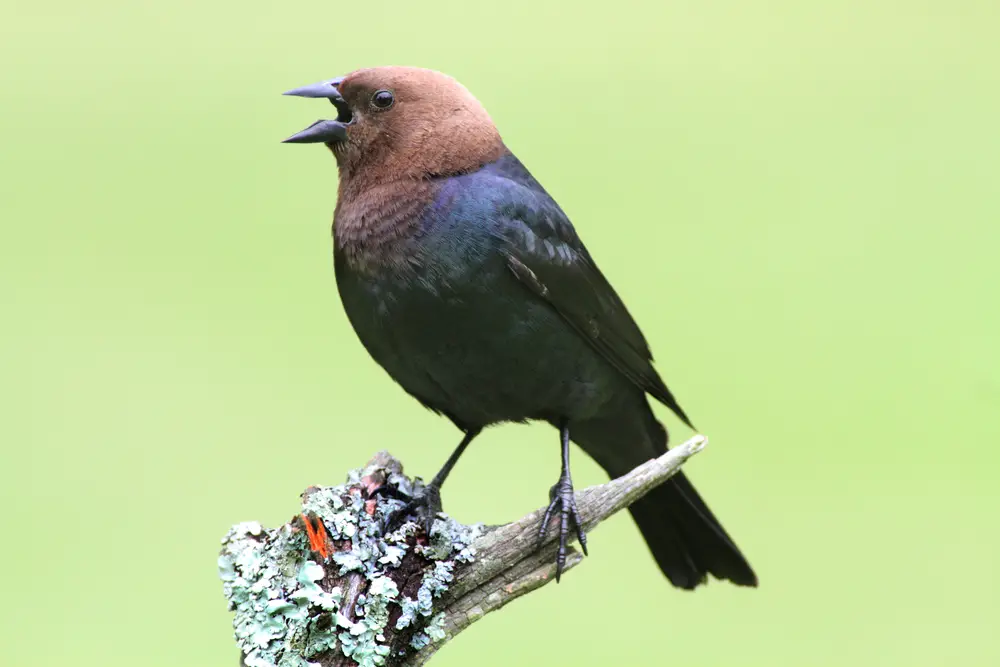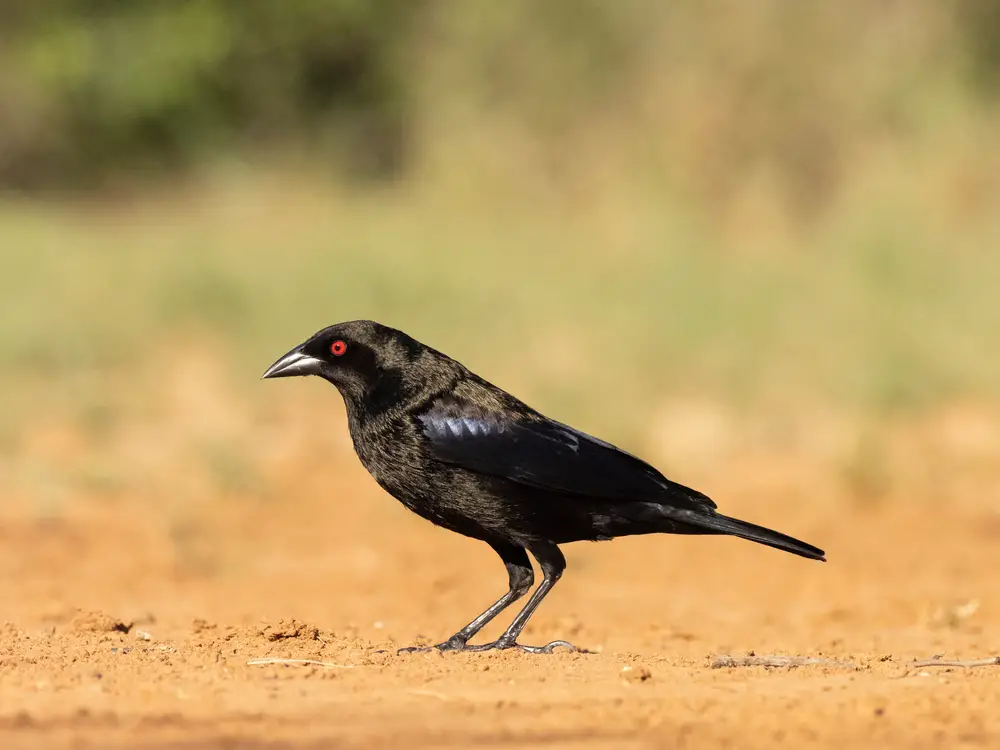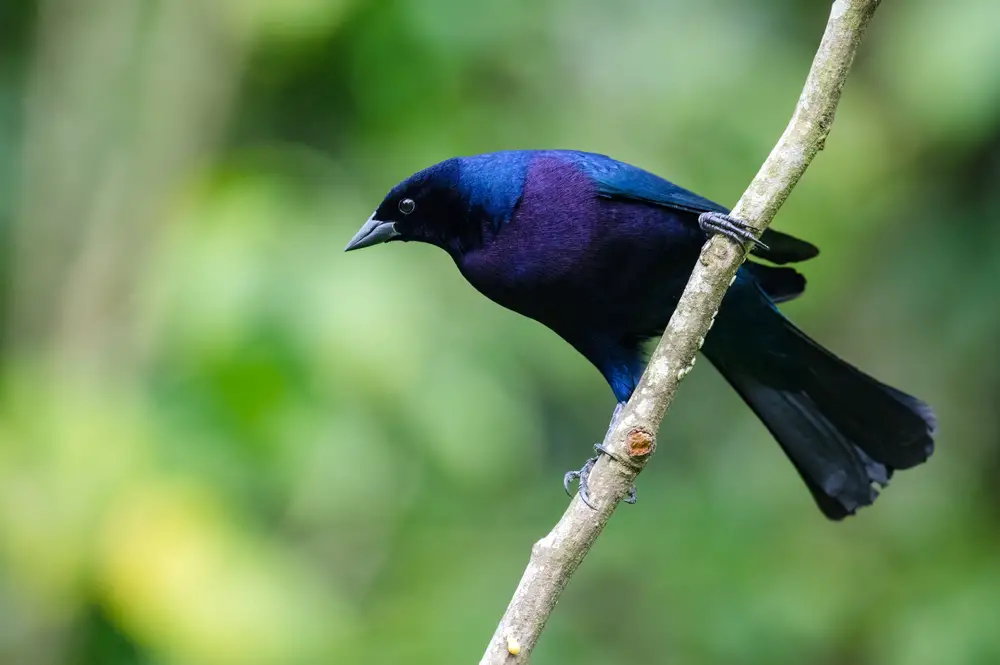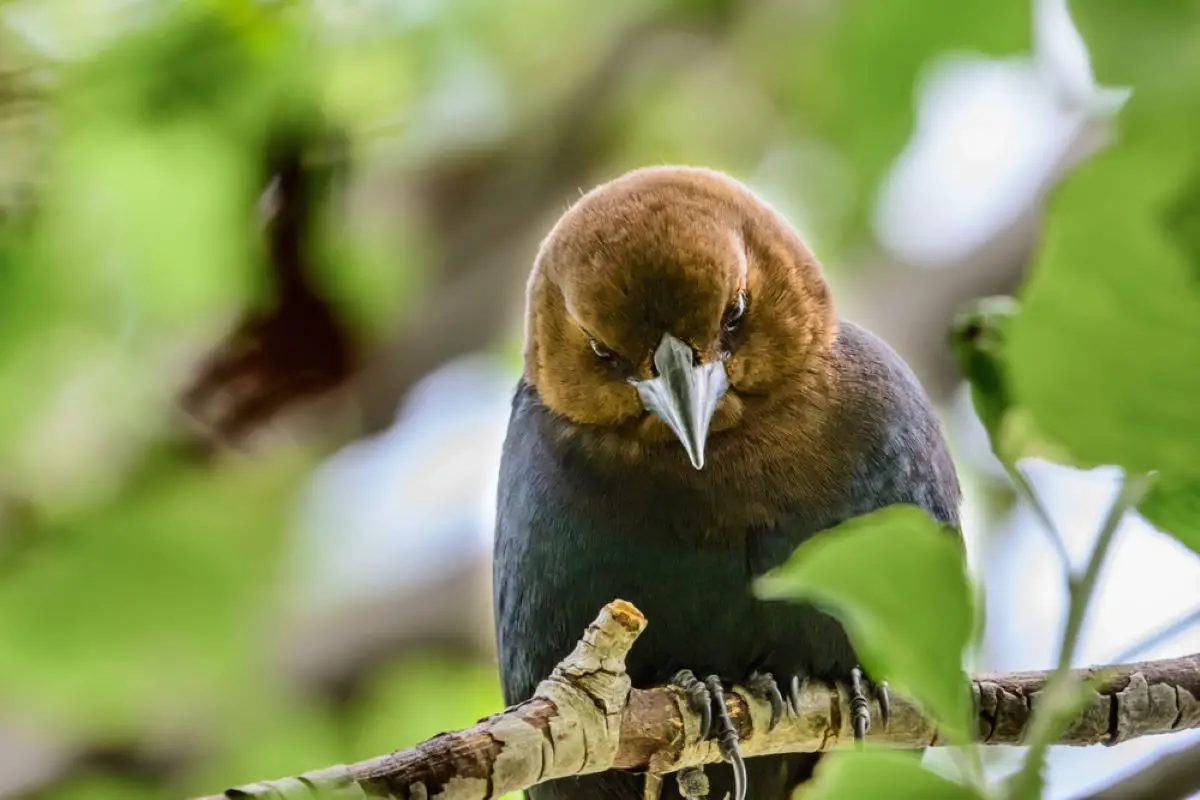Cowbirds are a North American bird species that use chatter calls, flight calls, and even a gurgle that sounds a lot like a drop of water! Cowbird songs are very similar between different species and subspecies, but they have a few differences, too.
Cowbirds are passeriformes, or perching birds, from the family Icteridae. Like all songbirds, these blackbirds have a unique song they use to claim territory and communicate with other birds from their own species. They also have distinct vocalizations that vary between the different species of cowbirds.
We will talk about the different cowbird songs and some other behaviors specific to cowbirds. We will also answer common questions about the different species of cowbirds, their ranges, and how their mating and nesting habits affect other bird species. While the cowbird is far from the flashiest songbird, there are plenty of interesting facts to learn about this extraordinary little bird!
Are all cowbird songs the same?
There are 3 different species of North American cowbirds:
- Brown-headed cowbirds
- Bronzed cowbirds
- Shiny cowbirds
While all 3 species have a very similar song, there are slight differences between them. All cowbird song uses thin, high whistling, along with a chatter call.
Cowbird song also includes a special flight call. This series of sounds is also called a flight whistle. When cowbirds are startled or disturbed, they take flight, letting out a shrill whistle followed by short syllables in slightly lower tones.
They use these vocalizations to sound the alarm and warn nearby birds of danger. You might also hear a flight whistle at night when flocks of cowbirds head to the field to hunker down for the evening.

What does a brown-headed cowbird sound like?
The brown-headed cowbird song is similar to the other species of North American cowbirds. They use flight whistles and chatter calls to communicate with each other throughout the day. But the most unique sound of the brown-headed cowbird is the gurgle they make, which sounds like the plop plop of a water droplet!
The brown-headed cowbird (Molothrus ater) is the most common of the North American cowbird species. Adult male brown-headed cowbirds have glossy black feathers and a brown head. Female brown-headed cowbirds are all brown with a lighter black beak. These common blackbirds can be found in fields and grazing lands throughout the United States, Canada, and Mexico.
What does the bronzed cowbird song sound like?
The bronzed cowbird shares the chatter call and the high-pitched whistle of other cowbird songs. The higher notes have a metallic sound to them, with more of a buzzing quality, the higher the pitch. The lowering pitched calls sound similar to the chuck chuck of the jay bird song. Bronzed cowbird songs also have a robotic-sounding tweet tweet with a light drip similar to the water droplet sound of the brown-headed cowbird.
Bronzed cowbirds (Molothrus aeneus) are glossy black all over, with bluish to greenish iridescent wings and crimson eyes. The female bronzed cowbird is steel gray with lighter red eyes. These city-dwelling blackbirds have a smaller range than the brown-headed cowbird. There are three subspecies of bronzed cowbirds-Molothrus aeneus aenues in South Texas, Eastern Mexico, and Central America, Molothrus aeneus assimilis in southwestern Mexico, and Molothrus aeneus loyei in southwestern US and northwestern Mexico.

What does the shiny cowbird song sound like?
The shiny cowbird song shares similarities with the other cowbird species, but this iridescent blackbird has a rich repertoire of vocalizations not found in other cowbird songs. Along with a mix of high-pitched chatters and tweets, the lower-pitched gurgles seem to mimic the swishing pulse of a sonogram heartbeat.
The shiny cowbird (Molothrus bonariensis) is a South American bird species that expanded its range into Florida in the 1980s. Their range continues to expand, aided in part by deforestation and urbanization. Adult males are glossy black with shimmery blues, purples, and greens throughout. The female is all brown and looks identical to the female brown-headed cowbird.
Is the cowbird an invasive bird species?
Cowbirds are a native North American blackbird species. Despite that, the cowbird’s quirky mating habits make it a problem for other bird species. Cowbirds are brood parasites, laying their eggs in the nests of other songbirds, often at the expense of the bird’s own eggs. This practice has detrimental effects on several types of songbirds.
All species of cowbirds practice brood parasitism, laying their eggs in occupied nests instead of raising their own young birds. Since most birds can’t tell the difference between their own eggs and cowbird eggs, the unwilling foster parents unwittingly hatch and end up caring for cowbird nestlings.
Most of the time, the cowbird eggs hatch before the host parent’s own eggs. When this happens, the large cowbird nestlings crush the eggs. When the cowbirds and foster parents’ eggs hatch simultaneously, the larger cowbird nestlings will trample or shove the other nestlings right out of the nest.
This presents challenges for the foster parents. Not only do they lose their nestlings, but birds like warblers and black-capped vireos are especially harmed by brood parasitism. Warblers are some of the most common targets for brood parasitism by the cowbirds, so this feisty little songbird has developed an adaptation to fight back.
When a warbler sees a cowbird nearby, they have a specific bird song to let other warblers know. Female warblers will rush to their nests, sitting on their eggs to prevent cowbirds from laying in their nests. Sometimes this works, but warblers don’t always see the cowbird before she gets a chance to lay her eggs.
Some warblers have learned to recognize cowbird eggs. They will push the eggs out of the nest or poke holes in them to prevent young cowbirds from hatching. If they are too small to push the eggs out of their nest, some warblers will even build their new nest right on top of the cowbird’s eggs!

How do young cowbirds learn cowbird songs if foster parents raise them?
Brood parasitism has led to some interesting adaptations by young cowbirds. Even though they are raised by songbird foster parents, they are drawn to the chatter call of cowbirds. When the young cowbird is ready to leave the care of their foster parents, they follow the cowbird song to join the flock.
Young cowbirds may depend on their foster parents until they are 40 days old. Once they are ready to survive on their own, they join the local cowbird flock, learning cowbird songs from the adults. Cowbirds that hatch from the second or occasional third brood sometimes flock with other blackbirds if the cowbirds have moved on to another location.
Cowbirds from higher elevations and latitudes tend to migrate for the winter months. This leaves younger nestlings joining the flocks of different bird species to survive. One study in New York found these nestlings have less exposure to cowbird songs during the crucial first 3 months of life, which can cause a delay in song learning. Younger cowbirds typically catch up with song learning by their second year of life.
Quick Cowbird Facts
- Cowbirds will flock with different species of blackbirds, as well as the invasive European starling.
- Bronzed cowbirds favor oriole nests over all other potential foster parents.
- The warning seet call the yellow warbler makes when they see a brown-headed cowbird is used exclusively to warn others about the brood parasite’s presence.
- Cowbirds are one of the few songbird species helped by deforestation and urbanization.
- As, and despite, land is being cleared to make way for cities, the different species of cowbirds have expanded their range.
Cowbird songs have an interesting mix of distinctive calls and sounds to help them connect with members of their own species. These intelligent blackbirds have mastered the art of communication through bird song with a rich variety of phrases. Now that you know the different cowbird songs and sounds, you’ll have a deeper understanding of the meaning behind them.

